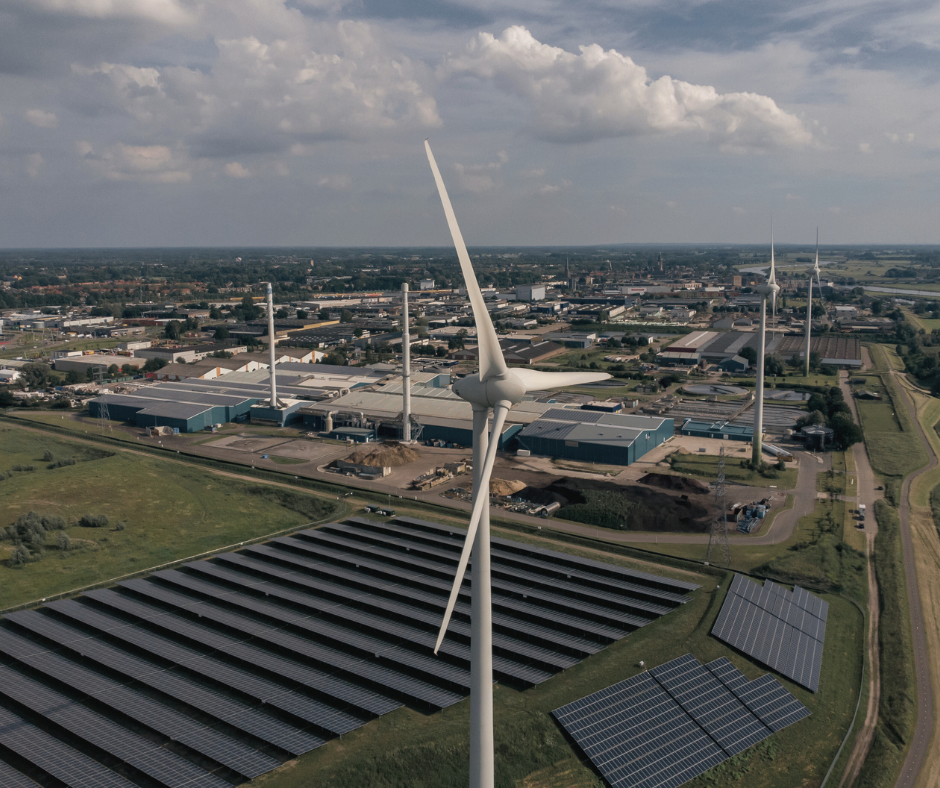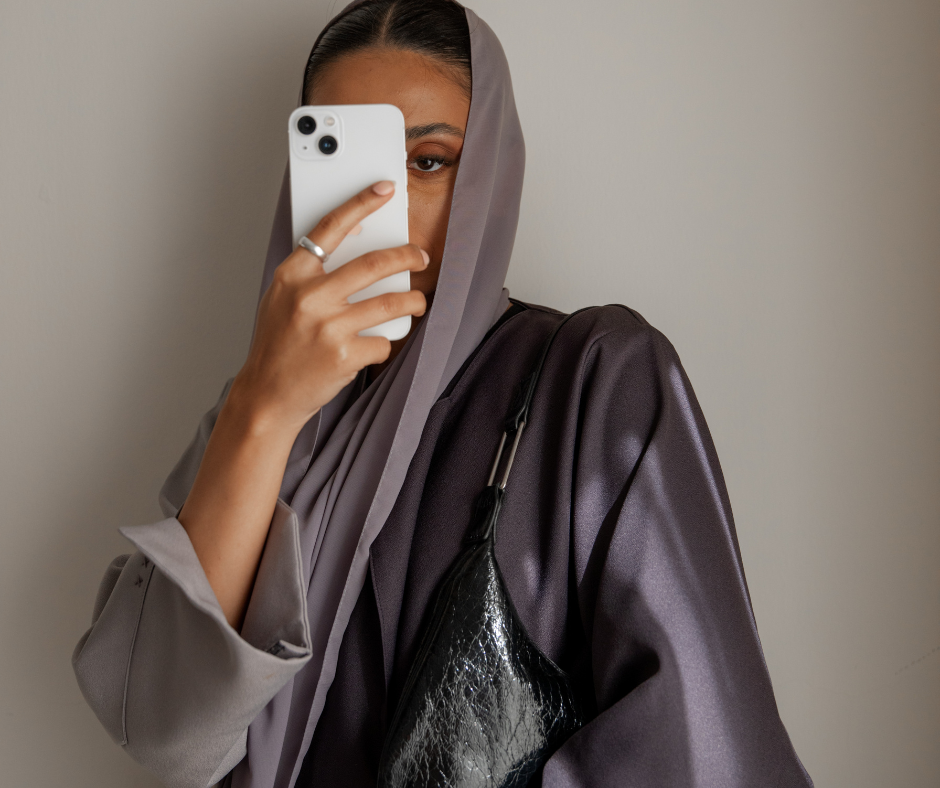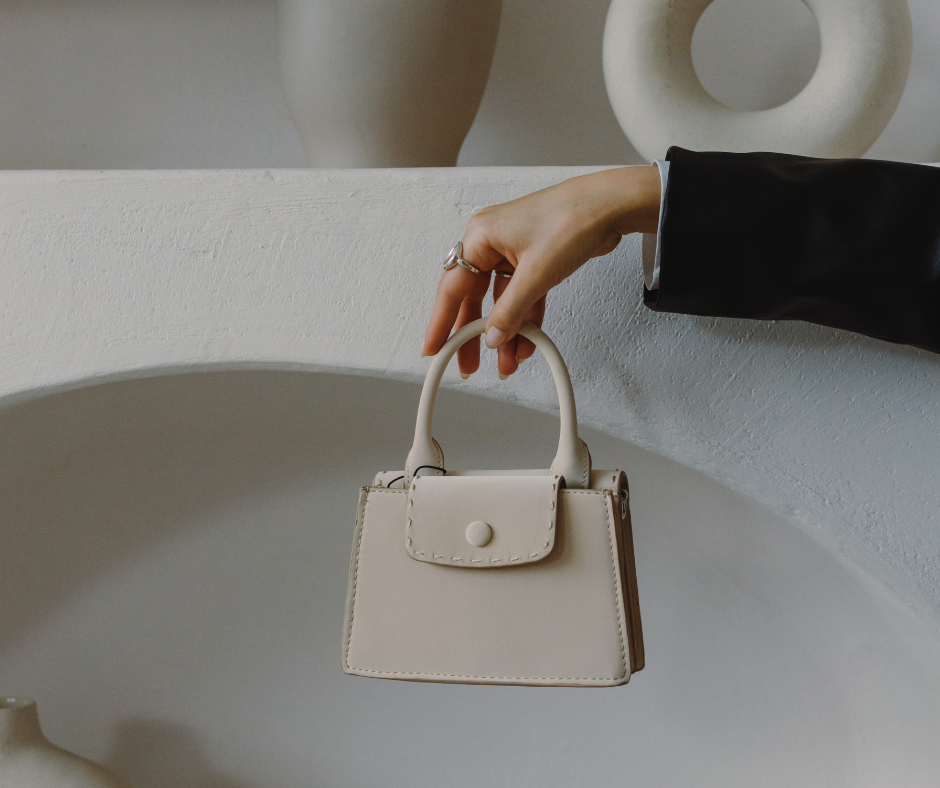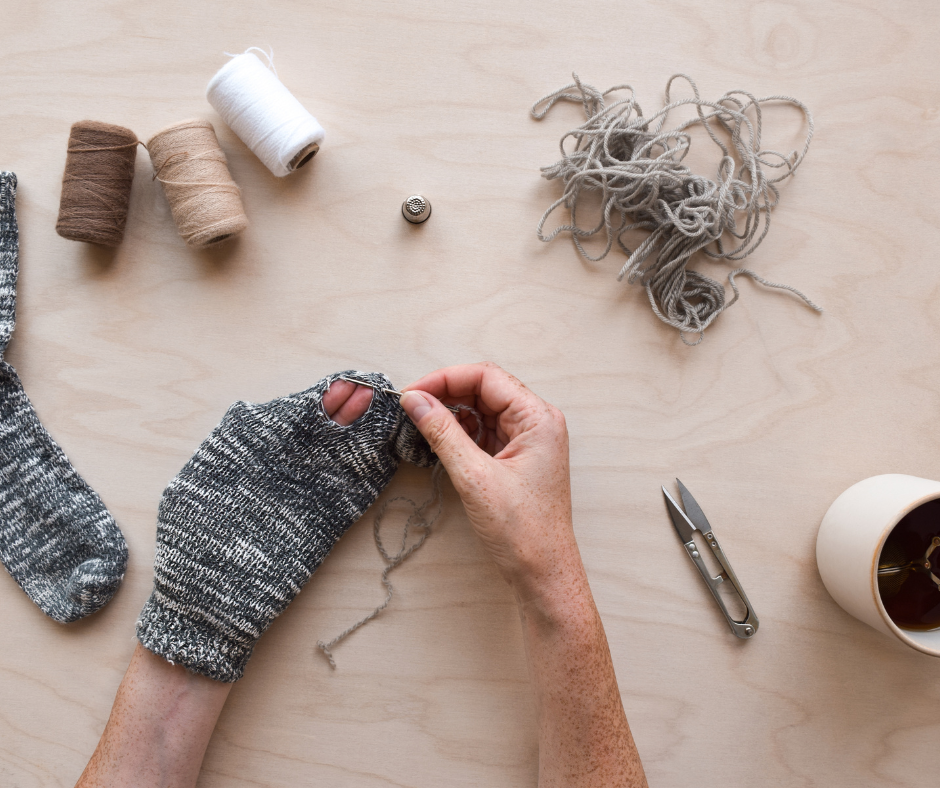

Major Brands & Women-Led Companies Embracing Circular Economy Models
Summary
Reflection Questions
Journal Prompt
The circular economy is an innovative economic model focused on sustainability, emphasizing the efficient use of resources and the minimization of waste. Unlike the traditional linear economy, which follows a ‘take-make-dispose’ approach, circular business models promote the reuse, repair, and recycling of materials to create a closed-loop system. In business, this approach not only addresses environmental concerns but also offers economic benefits and resilience to companies that adopt a circular business model.
By adopting more circular economy principles, companies are shifting toward more sustainable practices, contributing to long-term environmental protection and resource sustainability. From women-led companies like EcoChit and The Green Jar to other major brands like Patagonia and Adidas, read on to learn about business leaders embracing circular economies with the intention to protect natural resources, reduce global greenhouse gas emissions, stabilize supply chains, and more.
Understanding Circular Economies


According to this resource from the EPA, “A Circular economy approach [focuses] on reducing negative lifecycle impacts of materials, including climate impacts, reducing the use of harmful materials, and decoupling material use from economic growth and meeting society’s needs.”
Circular economies are grounded in the principle of maximizing resource efficiency and minimizing waste. In this system, materials are repurposed, reused, and recycled, extending their lifecycle and reducing the need to introduce new finite resources.
This model emphasizes sustainability, focusing on retaining the value of products and materials for as long as possible. It stands in contrast to the traditional linear model of ‘take, make, dispose.’ A truly circular economy aims for a more regenerative and restorative approach.
The transition from linear to circular economy strategies represents a significant paradigm shift in how businesses approach production and consumption. The circular economy transition is driven by the growing recognition of resource limitations and environmental concerns associated with the linear model.
Adopting circular economy principles allows businesses to reduce environmental impacts by limiting emissions and protecting natural systems, increase efficiency, and potentially lower costs. The shift also responds to increasing consumer demand for sustainable products and practices, aligning economic activities with environmental stewardship.
Key Principles of Circular Economies
Reduce, Reuse, Recycle: The Three Rs
The cornerstone of circular economies is encapsulated in the three Rs: Reduce, Reuse, Recycle. ‘Reduce’ focuses on minimizing resource use and waste generation right from the design stage. It advocates for creating more efficient processes and products that demand fewer raw materials.
‘Reuse’ involves extending the life of products and materials, repurposing them to delay entry into the waste stream. Finally, circular economies focus on recycling existing materials into new, useful products, closing the loop and reducing the need for virgin resources. Together, these principles foster a sustainable approach that significantly lessens environmental impact.
Sustainable Resource Management


Sustainable resource management in circular economies involves a strategic approach to using and reusing resources in a manner that maintains their value over time. It emphasizes the importance of renewable sources, efficient utilization, and minimal environmental harm.
This principle extends beyond just material management; it includes energy and water use, waste treatment, and overall ecosystem conservation. The goal is to achieve a balance where economic activities do not deplete resources but maintain them for future use.
Longevity and Maintenance of Products
Enhancing product longevity and focusing on maintenance are crucial aspects of circular economies. This principle advocates for designing products that are durable, easy to repair, and upgradeable, countering the throwaway culture prevalent in linear models.
It emphasizes the importance of quality and functionality over time, reducing the frequency of replacements and waste generation. Maintenance, including regular servicing and repair, becomes an integral part of the product lifecycle, ensuring products remain functional and efficient for as long as possible.
Women-Led Companies with Circular Economy Initiatives
EcoChit
EcoChit, co-founded by Lauren Cousins and Meagan Siddall, revolutionizes the receipt paper industry with its sustainable approach. The company has identified the environmental issues associated with standard receipt papers, such as the presence of harmful chemicals and non-recyclability, and has developed a product that addresses these concerns. EcoChit’s commitment to sustainability is evident in its eco-friendly practices and innovative product development.
EcoChit’s flagship product is an eco-friendly receipt paper that is 100% BPA & BPS free, fully recyclable, and plastic-free. This initiative not only offers a safer alternative to traditional receipt papers but also contributes to reducing environmental pollution. By incorporating these sustainable features, EcoChit is setting a new standard in the industry and demonstrating how businesses can effectively contribute to the circular economy.
You can find detailed information about EcoChit and their sustainable practices in the article titled “15 Women-Led Businesses Leading In Sustainability” on the Random Acts Of Green website.
DivaCup


DivaCup, a company known for its innovative menstrual care products, has made significant strides in embracing circular economy principles. Their commitment to sustainability is evident in their partnership with TerraCycle to launch the first-ever menstrual cup recycling program.
This program allows DivaCup users to recycle their used DivaCups and associated DivaWipes packaging. The recycled materials are then processed and transformed into new products, such as ground cover for playgrounds or athletic fields, effectively reducing waste and promoting a sustainable lifecycle for their products.
DivaCup and TerraCycle’s Recycling Initiative
This recycling initiative by DivaCup, in collaboration with TerraCycle, is a pioneering step in menstrual care products’ sustainability. It challenges the traditional notion that menstrual cups cannot be recycled and offers a practical solution to reduce landfill waste.
By participating in this program, consumers not only contribute to environmental sustainability but also support DivaCup’s mission to provide eco-friendly and health-conscious menstrual solutions. This initiative is a clear example of how companies can innovate to align their products and practices with circular economy principles, enhancing both their environmental impact and consumer engagement.
HuHa
HuHa is a company that has made a significant mark in the sustainable fashion industry, particularly in the realm of women’s underwear. Founded by Alexa Suter, HuHa’s mission centers around creating underwear that is not only comfortable and well-designed but also environmentally conscious.
The brand’s commitment to sustainability is evident in its product line, which focuses on addressing common issues found in conventional underwear, such as the use of irritating fabrics and unbreathable synthetic materials. By tackling these problems, HuHa stands out as a pioneer in sustainable intimate apparel.
Focus on Sustainable Underwear Materials
HuHa places a strong emphasis on the materials used in its underwear, ensuring they are eco-friendly and beneficial for both the wearer and the planet. Key to their product line are materials like TENCEL™ and smartcel™ sensitive, which are derived from sustainably managed forests and certified wood sources.
These materials are not only eco-friendly but also contribute to better intimate health due to their moisture management properties, making HuHa’s products a prime example of how sustainability and consumer well-being can go hand in hand.
Stream2Sea


Stream2Sea, founded by Autumn Blum, is a company that epitomizes the integration of environmental consciousness into business practice. Autumn, an ocean advocate and chemist, established Stream2Sea with a clear vision: to create a range of body care products that are safe for both people and aquatic environments.
The company’s product range includes sunscreens and body care items, all formulated under the guiding principle of environmental responsibility. This vision is a response to the growing need for products that do not harm aquatic ecosystems, particularly in light of the damage caused by conventional products.
Eco-Conscious Sunscreen and Body Care Products
Stream2Sea stands out in the circular economy for its eco-conscious sunscreen and body care products. These items are not only biodegradable but also performance-based, ensuring they are effective while being environmentally friendly.
The products are specifically designed to be safe for freshwater fish, saltwater fish, and coral larvae, addressing the critical issue of marine safety. This commitment to eco-friendliness extends to the packaging as well, which is made from sustainable materials. Stream2Sea’s approach reflects a comprehensive understanding of the circular economy, where product design, usage, and disposal are all considered for minimal environmental impact.
The Green Jar
The Green Jar, run by twin sisters Tannis and Mara Bundi, represents a unique approach to retail, focusing on reducing environmental impact. The store concept is built around the idea of a refillery, where customers can bring their own containers to refill with various household and personal care products.
This approach significantly reduces single-use packaging waste, contributing to a cleaner environment. The store’s waste reduction strategy is central to its operations, demonstrating a practical application of circular economy principles by minimizing waste and promoting sustainable consumption habits.
Emphasis on Package-Free, Plant-Based Products
The Green Jar’s dedication to sustainability is further exemplified in its emphasis on package-free, plant-based products. By offering a curated selection of goods that are both eco-friendly and free from plastic packaging, the store provides a tangible solution for consumers looking to reduce their environmental footprint.
This focus on plant-based products also aligns with the circular economy’s ethos of using renewable, non-toxic materials, thereby reducing the store’s overall environmental impact and supporting a more sustainable way of living.
Major Brands with Circular Economy Programs
Patagonia
Patagonia is renowned for its commitment to environmental responsibility, with significant efforts in reducing its carbon footprint and promoting sustainability. A pivotal aspect of their strategy is the Worn Wear program, which focuses on extending the life of Patagonia products. This program encourages customers to repair, trade, and recycle their products, reducing environmental impact and promoting a sustainable product lifecycle.
Use of Recycled Materials in Products
Patagonia’s dedication to sustainability is further underscored in its use of recycled materials across its product lines. The company has been working toward eliminating virgin petroleum materials in its products by 2025, focusing on recycled polyester and other sustainable materials. This shift is part of Patagonia’s broader goal to be net-zero across its entire business by 2040, encompassing all aspects of its operations and supply chain.
Patagonia’s approach exemplifies how businesses can effectively integrate circular economy principles into their operations, contributing to environmental sustainability while maintaining product quality and customer satisfaction.
IKEA


IKEA’s take-back program and circular services are key components of their commitment to sustainability. This initiative allows customers to return their old furniture to IKEA stores. These items are either refurbished for resale or recycled. This program aligns with the circular economy ethos by extending the life cycle of products, reducing waste, and conserving resources.
IKEA’s investment in sustainable materials reflects its commitment to environmental stewardship. The company focuses on using renewable and recycled materials in its products. For example, IKEA aims to use only renewable or recycled materials in its products by 2030. This shift is significant considering IKEA’s scale and impact, underscoring the company’s dedication to reducing its ecological footprint and promoting sustainable consumption.
These initiatives by IKEA highlight the practical application of circular economy principles in a global retail context, demonstrating how large companies can contribute positively to environmental sustainability.
Unilever
Unilever’s sustainable ingredient sourcing is a vital part of its circular economy approach. The company is focused on ensuring that the raw materials used in their products are sourced sustainably and ethically. This commitment involves working closely with suppliers to improve environmental and social standards across the supply chain, with a particular emphasis on reducing the environmental impact of sourcing activities.
In terms of packaging waste reduction goals, Unilever has set ambitious targets to tackle the issue of plastic waste. The company aims to significantly reduce its use of single-use plastics and increase the use of recycled plastic in its packaging.
These efforts are part of Unilever’s broader strategy to become more sustainable, aiming to ensure that all of its plastic packaging is reusable, recyclable, or compostable by a set target date. This initiative is crucial in reducing the environmental impact of packaging waste and promoting a more sustainable approach to product packaging.
Accenture
Accenture’s approach to a circular supply chain capability is centered around leveraging technology and innovation to create more sustainable and efficient supply chains. The company focuses on designing systems that reduce waste, optimize resource use, and facilitate recycling and reusing materials. This approach not only supports environmental sustainability but also improves operational efficiency and creates new business opportunities.
In terms of partnerships for sustainability, Accenture collaborates with various organizations and stakeholders to drive sustainable practices. These partnerships involve working with clients, industry groups, and technology providers to develop and implement solutions that promote circular economy principles. By fostering collaborations across different sectors, Accenture plays a crucial role in scaling up sustainable practices and driving impactful changes within the industry.
These initiatives by Accenture demonstrate the company’s commitment to integrating circular economy principles into their business operations and fostering a more sustainable and resilient future.
H&M
H&M’s Garment Collection Program is an innovative initiative aimed at reducing clothing waste and promoting recycling in the fashion industry. This program encourages customers to bring their old garments to H&M stores, regardless of their condition.
These collected items are either reused, resold, or recycled, supporting H&M’s commitment to a circular fashion model. The program exemplifies how retailers can actively participate in reducing textile waste and contribute to a more sustainable fashion ecosystem.
In terms of using sustainable materials in fashion, H&M has made significant strides towards incorporating eco-friendly materials into their collections. The company focuses on using materials that are either recycled or sourced sustainably to minimize environmental impact.
This effort includes the increased use of organic cotton, recycled polyester, and other sustainable materials. H&M’s investment in sustainable materials is part of their broader strategy to become more eco-friendly and reduce their carbon footprint in the fashion industry.
Adidas


Adidas’ Three Loop Strategy is a comprehensive approach to sustainability, focusing on three types of products: Made to be remade, Made to be recycled, and Made to last. This strategy emphasizes creating products that can easily be returned and repurposed at the end of their life, thus supporting a circular model in the fashion industry.
Adidas has a firm commitment to reducing plastic waste. One of their notable initiatives is the pledge to eliminate virgin plastic from their products. This includes not using new plastic in their offices, retail outlets, warehouses, and distribution centers. Their efforts also extend to developing and using recycled materials in their products, significantly contributing to reducing the environmental impact of plastic waste.
Interface
Interface, a company renowned for its carpet tiles, has implemented a closed-loop manufacturing process that exemplifies the principles of the circular economy. This process involves designing products with the end of their life in mind, ensuring that materials can be recycled or repurposed, thereby reducing waste and conserving resources. This approach reflects Interface’s commitment to reducing their environmental impact and transitioning towards more sustainable manufacturing practices.
In addition to their innovative manufacturing process, Interface has also initiated carpet tile recycling programs. These initiatives allow for the recycling of old carpet tiles into new products, effectively creating a sustainable cycle for their materials. This effort not only reduces landfill waste but also conserves the raw materials and energy that would otherwise be required to produce new tiles, further underscoring Interface’s dedication to sustainable practices and the principles of the circular economy.
HP


HP’s recycling efforts and development of eco-friendly products demonstrate their commitment to environmental sustainability. The company has been proactive in creating recycling programs for their electronic products and cartridges, promoting a circular use of resources. This initiative contributes to reducing e-waste and supports the reuse of materials. Additionally, HP is focused on developing products that are more energy-efficient and made from recycled or sustainable materials, aligning with their goal to minimize their environmental impact.
HP has set an ambitious goal to achieve net-zero emissions by 2040. This target encompasses their entire value chain, including product design, manufacturing processes, and supply chains. The strategy involves reducing their carbon footprint, increasing the use of renewable energy, and improving product energy efficiency. HP’s commitment to this goal is a significant step towards a more sustainable and responsible approach to technology and business operations, reflecting their dedication to contributing to a more sustainable future.
TrusTrace
TrusTrace has established itself as a leader in fashion transparency with its digital platform. This platform is designed to track and verify the sustainability claims of fashion brands, ensuring authenticity and accountability in their environmental commitments. It provides a detailed overview of the supply chain, enabling brands to monitor their impact and make informed decisions towards sustainable practices.
The company places a strong emphasis on sustainability in fashion. TrusTrace actively promotes the use of sustainable materials and ethical manufacturing processes in the fashion industry. Their platform supports brands in achieving greater sustainability by providing the tools and data needed to make environmentally responsible choices, thereby fostering a more sustainable fashion industry.
Mud Jeans
Mud Jeans’ innovative approach to sustainability in the fashion industry is evident in their jeans recycling and leasing program. This unique model allows customers to lease jeans and return them at the end of use, from where they are either recycled or refurbished for further use. This program not only challenges the traditional buy-and-dispose model but also significantly reduces waste and extends the lifecycle of the garments.
The company’s focus on a closed-material loop is central to its business philosophy. Mud Jeans strives to create a fully sustainable production cycle, where every pair of jeans is either made from organic or recycled materials and is designed to be recyclable at the end of its life. This commitment to a closed-loop system reduces reliance on virgin resources and minimizes environmental impact, setting a new standard in sustainable fashion practices.
How Can Small Businesses Embrace the Circular Economy Model?


Creating a circular economy action plan for a small business involves several steps. The circular economy is based on the principles of designing out waste and pollution, keeping products and materials in use, and regenerating natural systems.
Remember, transitioning to a circular economy model is a journey that involves continuous learning and adaptation. It’s important to start with manageable steps and gradually build upon them. Below is our guide to transition your company from a linear economy to a more circular economy.
Understand Circular Economy Principles
Familiarize yourself with the key concepts of the circular economy. This includes understanding how to minimize waste, optimize resource use, and create sustainable business practices. Reading this article was your first step!
Assess Your Current Practices


Look at your current business practices to identify areas where you can implement circular economy principles. This includes your supply chain, product design, manufacturing processes, and end-of-life product management.
Set Clear Objectives
Define what you want to achieve with your circular economy action plan. Goals might include reducing waste, using more sustainable materials, implementing recycling programs, or designing products for longevity.
Redesign for Sustainability
Consider how you can redesign your products or services to be more sustainable. This might involve using recyclable or biodegradable materials, designing for easy disassembly, or offering services that extend the life of a product (like repair services).
Optimize Resources
Look for ways to use resources more efficiently. This could include reducing energy consumption, minimizing water usage, or finding ways to reuse materials.
Develop a Supply Chain Strategy
Evaluate your supply chain for opportunities to incorporate circular economy principles. This could involve working with suppliers who use sustainable practices or sourcing recycled materials.
Engage Stakeholders
Involve your employees, customers, suppliers, and the local community in your circular economy plan. Education and awareness are key to successful implementation.
Implement Waste Reduction Strategies
Develop strategies to minimize waste. This could include recycling programs, composting, or finding ways to repurpose waste materials.
Monitor, Report, and Adjust
Establish metrics to monitor your progress. Regularly report on these metrics and be prepared to adjust your strategies as needed.
Promote Your Efforts


Share your commitment to the circular economy with your customers and community. This can enhance your brand image and encourage others to adopt similar practices.
Seek Continuous Improvement
The circular economy is an ongoing process. Continuously look for new ways to improve and innovate your practices.
Leverage Partnerships and Collaborations
Collaborate with other businesses, non-profits, or government agencies to learn from others and scale your impact.
How Can Consumers Support the Shift from Linear to Circular Business Models?
Consumers play a vital role in supporting and advancing the circular economy. While their actions differ from those of businesses, they are equally important. Below are some ways consumers can contribute.
Educate Yourself


Learn about the circular economy and understand the impact of your consumption habits. Knowledge about how products are made, used, and disposed of is crucial.
Make Conscious Purchases
Choose products that are made sustainably, have minimal environmental impact, and are designed for durability and longevity. Look for products with eco-friendly materials, recyclable packaging, or those made by companies with strong sustainability commitments.
Reduce, Reuse, Recycle
Embrace the three R’s. Reduce your consumption where possible, reuse items instead of buying new ones, and recycle products at the end of their life cycle.
Support Sustainable Brands


Patronize businesses that are committed to sustainable practices and circular economy principles. This can include small local businesses, ethical brands, and companies that offer repair services or take-back programs for their products.
Opt for Products with Extended Lifespan
Whenever possible, choose products that are designed to last longer. This reduces the frequency of replacements and the overall demand for resources.
Participate in Sharing Economies
Engage in sharing, leasing, or borrowing rather than owning products outright. This can be particularly relevant for items that are not frequently used.
Repair and Upcycle


Instead of discarding items, consider repairing them. Upcycling or creatively reusing items can also give them a new lease on life.
Advocate and Educate
Share your knowledge and passion for a circular economy with friends, family, and your community. Advocacy can influence others and create a larger impact.
Provide Feedback to Companies
Give feedback to companies about their products and sustainability practices. Consumer demand can drive companies to adopt more sustainable and circular practices.
Use Products Fully and Responsibly
Utilize products to their fullest potential and dispose of them responsibly at the end of their lifecycle.
Stay Informed About Product Disposal
Learn about proper disposal methods for different types of waste in your community, such as electronics, hazardous materials, and plastics.
Support Policy Changes
Advocate for policies and regulations that support circular economy principles, such as extended producer responsibility, recycling initiatives, and sustainability standards.
Final Thoughts on Shifting to Circular Business Models


In sum, the adoption of circular economy models presents a transformative approach towards sustainability. By redefining growth to focus on positive society-wide benefits, these models shift away from traditional, linear methods of consumption and production. They offer a pragmatic solution for the efficient use of resources, waste reduction, and the minimization of environmental impact.
Looking forward, the potential for circular economies in the business world is substantial. As awareness grows and technology advances, businesses are increasingly likely to integrate circular principles into their operations. This shift not only bodes well for environmental sustainability but also promises economic resilience and innovation.
Ultimately, the successful implementation of circular economies could redefine how businesses and consumers interact with our planet’s resources, paving the way for a more sustainable future.








